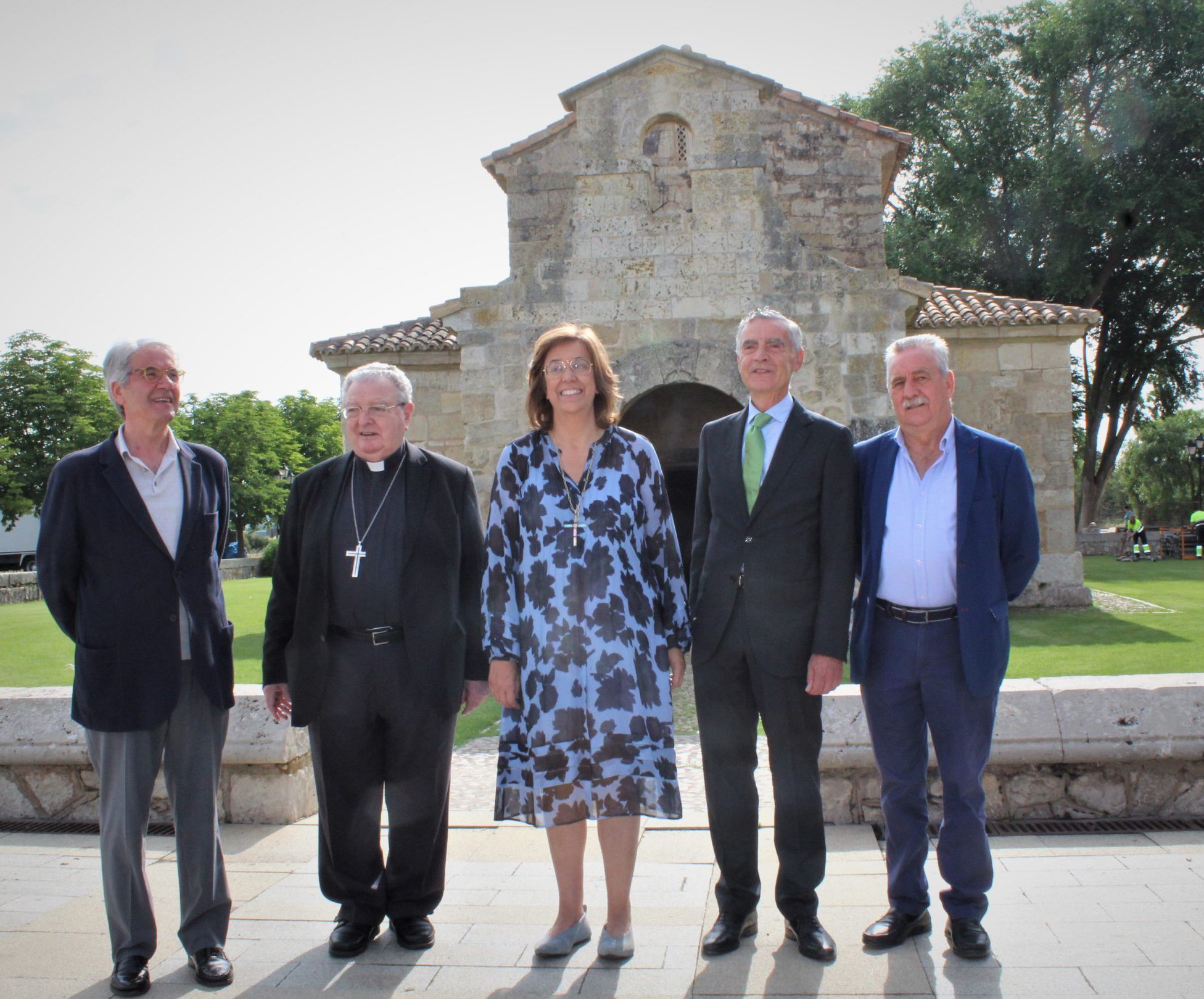Fundación Iberdrola will illuminate San Juan de Baños, Spain’s oldest standing church
- The bishop of Palencia, Manuel Herrero, and the president of Fundación Iberdrola España, Fernando García, have signed this morning an agreement for the interior ornamental lighting of the Palencia basilica
- The new lighting will seek, in a play of light and shadow, to emphasize an intimate and spiritual environment that links the visitor to the transcendence of the temple – A lighting design that respects the heritage and liturgical values
- This initiative is another example of Iberdrola’s commitment to Castilla y León and of its permanent intention to promote the social value of the culture, origin, and conservation of the historical and artistic heritage of the region
The bishop of Palencia, Manuel Herrero, and the president of Fundación Iberdrola España, Fernando García, have signed this morning, in the presence of the president of the Provincial Council of Palencia, Ángeles Armisén, the mayor of Venta de Baños, José María López, and the director of Fundación Iberdrola, Ramón Castresana, an agreement in the basilica of San Juan de Baños to carry out the interior ornamental lighting of the oldest standing church in Spain, located in the town of Baños de Cerrato in Palencia.
This initiative will provide the Palencia temple with a new light that will seek, in a play of light and shadow, to emphasize an intimate and spiritual environment that links the visitor to the transcendence of the basilica.
To this end, the lighting design will be respectful of heritage and liturgical values, accentuating the beauty of the different construction phases of the unique elements that make up the complex and the meaning that the architecture represents.
The basilica was declared a National Monument in 1897. It represents a clear example of the fusion of the Visigothic culture within the Hispanic-Roman and Germanic duality, resulting in the most significant building of the religious architecture of the Hispano-Visigothic kingdom. Considered the oldest standing church in Spain, it was built and consecrated in the year 661 as attested by the tombstone preserved in the triumphal arch of the temple. Tradition links its construction to the will of the Visigothic monarch Recesvinto.
Throughout the last thirteen centuries, the basilica has undergone numerous modifications and reconstructions. Originally the walls were built with well-squared stone ashlars. Inside, remains of Roman buildings in the area were reused, such as capitals and the shafts of the columns. The horseshoe arch is used, with the Visigothic canon. The original chevet was in the form of a trident with three chapels separated by intermediate spaces. This will be modified in the 14th century, the intermediate hollows are converted into two new chapels giving rise to a chancel with five spaces. Over time, the outer walls disappeared, giving rise to the current structure.
The new lighting is yet another example of Iberdrola’s commitment to Castilla y León and its permanent aim to promote the social value of the culture, origin, and conservation of the region’s historical and artistic heritage.
Care, conservation, and enhancement of heritage
One of Iberdrola’s main areas of action, through its foundation in Spain, focuses on the care, conservation, and enhancement of historical and artistic wealth.
The main objective of the Lighting Program is to develop interventions in unique buildings to install or improve their interior and/or exterior lighting systems to contribute to the enhancement of heritage.
Since 2011, the volume of investment allocated to the Lighting Program has amounted to over 3 million euros and has involved the improvement of over 40 monuments in Spain, including the interior of the Cathedral of Palencia, the Cathedral of Avila and the New Cathedral of Salamanca, the Palencia church of San Hipólito el Real, the historic Roman Bridge of Alcántara in Cáceres, the façade of the Congress of Deputies, the Palace of the Supreme Court in Madrid, the Cathedral of Santiago de Compostela and the Cathedral of Sigüenza. It is also developing the lighting project for the quadruple lock, a tourist landmark in the town of Terracampina that represents one of the most important hydraulic engineering works of the Canal de Castilla, which spans four slopes with a total height of 14.20 meters.

